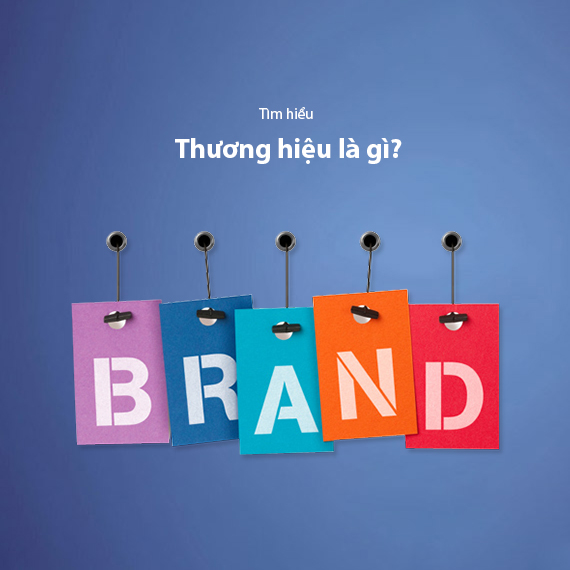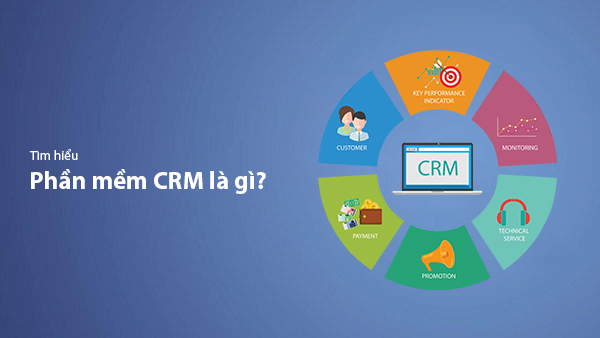What is a Brand – Comprehensive Guide to Effective Branding
- Published on

- What is a Brand?
- History of Branding
- Importance of Branding for Businesses
- Differentiating Trademarks and Brands
- Why Should Businesses Invest in Branding?
- Increases Business Value
- Builds Trust and Loyalty Among Customers
- Creates Competitive Advantages
- 10 Components of a Brand
- Brand Compass
- Company Culture
- Brand Personality
- Brand Architecture
- Brand Name and Tagline
- Brand Identity System
- Brand Voice and Messaging
- Business Website
- Social Media
- Customer Experience
- Brand Creation Process
- Stage 1 - Brand Formation
- Stage 2 - Brand Recognition
- Stage 3 - Customer Experience
- Stage 4 - Brand Promotion Activities
- Criteria of a Perfect Brand
- Meeting Market Needs
- Clear Differentiation
- High Brand Recognition
- How to Build a Brand for New Businesses
- What is Brand Building?
- Importance of Brand Building
- Key Elements Before Building a Brand
- Steps to Build a Successful Brand
- Brand Extension
- Definition and Importance of Brand Extension
- 5 Common Types of Brand Extension
- How to Build Positive Brand Perception Among Consumers
- Emotional Brand Perception
- Rational Brand Perception
- Additional Branding Concepts
- Brand Strategy
- Brand Vision
- Brand Identity
- Brand Story
- Brand Equity
- Conclusion
What is a Brand?
Brand is a collection of elements that help identify and differentiate a product, service, or organization from its competitors in the market. It includes not only physical elements like name, logo, and color scheme but also intangible values such as emotions, reputation, and the experiences consumers associate with the product or business.
A strong brand is not merely a name or a symbol; it is a promise of quality, value, and uniqueness. According to many experts, a brand is the most important "intangible asset" of a business as it directly impacts trust and customer loyalty.

History of Branding
The origins of branding can be traced back to when humans began exchanging goods. In ancient times, artisans used distinctive marks to differentiate their products. For example, in the Roman era, marketplaces saw the use of symbols or engraved marks to identify the origins of goods.
In the 19th century, industrialization and global trade propelled the concept of branding into an essential marketing tool. Famous brands like Coca-Cola, IBM, and Ford shaped how modern branding operates, combining quality products with consumer emotions.
Today, with technological advancements, digital branding has become an indispensable trend. Businesses now build brands not only through products but also via social media, website user experiences, and other platforms.
Importance of Branding for Businesses
Branding serves as a bridge between a business and its customers. A strong brand offers several practical benefits:
- Increases business value: A recognized brand in the market provides businesses with competitive advantages and the ability to set higher prices.
- Attracts and retains customers: A reliable brand encourages consumers to pay more and return for repeat purchases.
- Supports expansion strategies: A strong brand allows businesses to easily implement strategies like product line extensions or franchise models.
- Enhances recognition: Branding is the first thing customers remember when thinking about a product, service, or industry.
Differentiating Trademarks and Brands
Although "trademark" and "brand" are often used interchangeably, they have distinct differences:
- Trademark refers to legal elements such as logos, trade names, or symbols that are registered for intellectual property protection. Trademarks can be used in litigation for ownership disputes.
- Brand, on the other hand, is more comprehensive, encompassing visual identity and the values perceived by consumers.
For example, the "Nike Swoosh" logo is a trademark, but the feelings of "creativity, speed, and success" it evokes are part of Nike's brand.
With an overview of the concept and importance of branding, we will explore why businesses need to invest in branding in the next section.
Why Should Businesses Invest in Branding?
Investing in branding is not just an expense; it is a long-term strategy that helps businesses achieve sustainable growth and reap significant benefits. In a competitive market, a strong brand can be the decisive factor for a business's success or failure.
Increases Business Value
A well-known and trusted brand will increase the market value of the business, appealing to both customers and investors. A strong brand offers advantages such as:
- Higher product pricing: Customers are often willing to pay more for products from brands they trust.
- Attracting investors: Investors are easily drawn to businesses with strong brands, as they signify stability and growth potential.
- Boosting intangible assets: In many cases, the value of a brand constitutes a significant portion of the total business value.
Builds Trust and Loyalty Among Customers
Customer trust is one of the most valuable assets a brand can bring. A good brand helps businesses:
- Retain existing customers: Loyal customers are more likely to make repeat purchases and stick with the brand.
- Attract new customers: A standout brand makes products more appealing in the market.
- Inspire loyalty: A strong brand can evoke emotions and foster long-term customer loyalty.

For example, Apple does not just sell technology devices but also delivers a lifestyle and a sense of pride in owning their products.
Creates Competitive Advantages
In an increasingly saturated market, a strong brand is a powerful tool to differentiate a business from its competitors. Branding creates competitive advantages by:
- Increasing recognition: A memorable brand makes it easier for customers to choose your product over competitors.
- Providing emotional value: A brand not only sells products but also emotional experiences.
- Building credibility: Long-standing credibility helps brands maintain a leading position in the industry.
A prime example is Coca-Cola, which competes not only with its products but also with its brand story and cheerful image, connecting people worldwide.
Investing in branding is a wise decision to ensure a business's sustainable growth. In the next section, we will explore the 10 components of a successful brand, highlighting the essential factors for brand development.
10 Components of a Brand
A strong brand does not come naturally; it results from a combination of clear and strategic elements. Below are the 10 components of a brand that help shape and develop a complete identity.
Brand Compass
The Brand Compass serves as a strategic framework, including:
- Vision: The long-term goals of the brand.
- Mission: The reason the brand exists.
- Core values: The principles the brand commits to.
- Unique selling point: What makes your brand stand out from competitors.
Company Culture
Company culture is the foundation of a brand, reflecting the values and commitments through the organization's operations. A strong culture:
- Motivates employee loyalty.
- Shapes how the brand interacts with customers.
- Fosters a creative environment, supporting brand growth.
For example, Google is renowned for its innovative and people-focused culture, which directly reflects in its brand.
Brand Personality
Brand personality is how a brand communicates and interacts with customers, using tone, style, and imagery. It can be shaped by traits such as:
- Friendly and approachable: Like Starbucks.
- Professional and reliable: Like IBM.
- Innovative and bold: Like Tesla.
Brand Architecture
Brand architecture organizes and manages products, services, or sub-brands within the same system. There are three main models:
- Branded House: One master brand governs all (e.g., Google with Gmail, YouTube, Google Maps).
- House of Brands: Independent brands under a parent company (e.g., Unilever with Dove, Lipton, Axe).
- Hybrid: A mix of the two (e.g., Coca-Cola with Sprite, Fanta).
Brand Name and Tagline
A brand name and tagline are the first elements customers recognize. A good name and tagline should:
- Be easy to remember and pronounce.
- Reflect core values or benefits.
- Leave a strong impression.
For example, Nike – "Just Do It" symbolizes determination and success.

Brand Identity System
The brand identity system includes:
- Logo: The visual representation of the brand.
- Color palette: Colors that create associations.
- Typography: Fonts that reflect the brand's style.
- Imagery and design: Consistent visual style across all platforms.
Brand Voice and Messaging
Brand voice is how the brand communicates with its audience, which can be:
- Formal or informal.
- Humorous or serious.
Brand messaging must be consistent, clear, and reflect the brand's core values.
Business Website
Business websites represent the brand online and often serve as the "front door" for customers. A good website should:
- Have an attractive and user-friendly design.
- Contain content aligned with the brand's message.
- Be optimized for user experience (UX) and SEO.
Social Media
Social media is a powerful tool for building and maintaining a brand. Businesses should:
- Create engaging content.
- Interact frequently with customers.
- Measure effectiveness through metrics like likes, comments, and shares.
Customer Experience
Customer experience is a critical factor in determining whether a brand truly leaves a lasting impression. This includes:
- Product/service quality.
- Customer service.
- Ease and convenience in transactions.
The above factors are the foundation for building and strengthening a strong brand. Next, we’ll delve into the brand creation process, from the initial idea to extensive promotion in the market.
Brand Creation Process
Creating a brand is not just about coming up with a name or a logo; it’s a strategic process focused on building a sustainable connection with customers. Below are the 4 key stages in the brand creation process, from the initial concept to capturing a strong position in the customers' minds.
Stage 1 - Brand Formation
The first stage of the process includes:
- Market research: Identifying customer needs, competitors, and market trends.
- Brand positioning: Choosing how the brand will stand out and differentiate itself, including:
- Core strengths.
- Unique value propositions.
- Target audience.
- Creating the name, logo, and slogan: These are the initial identification elements that help the brand easily approach the market.
Example: Tesla positions itself as a leader in technology and sustainability within the electric vehicle industry.
Stage 2 - Brand Recognition
This stage focuses on building and conveying the brand's image to the market. It includes:
- Establishing a brand identity system: Logo, color schemes, typography, and visual styles must remain consistent across all channels.
- Content development: Creating messages and brand stories that align with core values.
- Distribution channels: Selecting the right platforms for promotion, such as websites, social media, and advertising campaigns.
A prime example is Coca-Cola, with its consistent global brand identity system.
Stage 3 - Customer Experience
Customer experience is the deciding factor in the success of a brand. Businesses should:
- Deliver high-quality products/services: Ensure the product meets or exceeds customer expectations.
- Provide excellent customer service: Good after-sales service fosters long-term loyalty.
- Collect feedback: Understand customer opinions to improve the experience.
Example: Amazon is known for its flexible return policies and outstanding customer service.
Stage 4 - Brand Promotion Activities
This is the stage where businesses increase brand awareness through marketing and communication activities:
- Advertising: Employing creative campaigns across multiple channels (TV, online, social media).
- Public relations (PR): Building a positive image through events or social initiatives.
- Customer engagement: Maintaining regular interaction through email marketing, social media, or loyalty programs.
A strong brand not only stops at promotion but must also maintain consistency and innovate to stay relevant to market trends.
The brand creation process is not just a phase but a continuous cycle requiring businesses to improve constantly. In the next section, we’ll explore the criteria of a perfect brand to evaluate its success.
Criteria of a Perfect Brand
A perfect brand must not only be easily recognizable but also establish long-term relationships with customers. Below are the key criteria for assessing the success and completeness of a brand.
Meeting Market Needs
A perfect brand must clearly understand and effectively meet customer needs. This includes:
- Suitable products or services: Ensuring the brand delivers real value by solving problems or satisfying customer demands.
- Innovation and adaptability: Continuously improving to keep up with trends and changes in consumer behavior.
Example: Netflix evolved from a DVD rental service to a global streaming platform, meeting customers' demand for entertainment anytime, anywhere.
Clear Differentiation
Differentiation is a core element that makes a brand stand out in a sea of competitors. A perfect brand must:
- Have a unique selling proposition (USP).
- Possess recognizable imagery and messaging.
- Avoid being confused or imitated by other brands.
Example: Nike stands out with its simple "swoosh" logo and the slogan "Just Do It," making it easily recognizable in the sports industry.
High Brand Recognition
Brand recognition measures how well customers remember and identify a brand. Factors that enhance recognition include:
- Consistent identity system: Logos, color schemes, typography, and visual elements must be unified across all channels.
- Effective promotional strategies: Utilizing diverse media channels, from social media and TV to email marketing.
- Compelling brand story: An engaging story helps connect emotionally with customers, making the brand more memorable.
Example: Coca-Cola uses its signature red color and the "Share a Coke" campaign to boost global brand recognition.
A perfect brand doesn’t stop at recognition but must sustain and grow its presence in customers' hearts over time. In the next section, we will dive into how to build a brand from scratch, especially for new businesses aiming to establish a strong market position.
How to Build a Brand for New Businesses
Building a brand is one of the most critical and strategic steps for new businesses. A solid brand not only builds trust but also opens up opportunities for long-term market growth. Below are detailed steps to build a brand from scratch.
What is Brand Building?
Brand building is the process of designing, implementing, and maintaining elements that help a brand become recognizable and connect with customers. This process includes:
- Positioning the brand in the market.
- Creating unique value propositions to attract customers.
- Building sustainable relationships with the target audience.
Example: Airbnb not only provides accommodation services but also builds its brand around the message "Belong Anywhere," fostering emotional connections with customers.
Importance of Brand Building
Building a brand brings many strategic benefits for new businesses, including:
- Enhancing trust: A reliable brand makes customers feel secure when using its products/services.
- Strengthening differentiation: In a competitive market, a strong brand helps businesses stand out from competitors.
- Attracting customers: An impressive brand appeals to new customers and retains existing ones.
- Supporting expansion: A good brand forms the foundation for businesses to implement expansion strategies easily.
Key Elements Before Building a Brand
Before starting the branding process, businesses should prepare thoroughly for the following elements:
Understanding the Market and Target Audience
- Market analysis: Study customer needs, behaviors, and expectations.
- Identify target audience: Select the appropriate customer segments to focus branding efforts.
Brand Positioning
- Choose how the brand will appear in customers' minds.
- Define core values and unique differences from competitors.
Creating Brand Message and Story
- The message should be memorable, consistent, and reflect the company’s values.
- A brand story helps build emotional connections with customers.
Steps to Build a Successful Brand
Designing Brand Identity
- Create a logo, choose colors, typography, and other design elements.
- Build a consistent identity system across all platforms.
Developing a Communication System
- Plan communications across channels like social media, websites, and email marketing.
- Create engaging content that aligns with the brand voice and personality.
Enhancing Customer Experience
- Ensure high-quality products/services.
- Focus on customer service to foster loyalty.
Monitoring and Improving
- Collect feedback from customers to assess the brand's effectiveness.
- Adjust strategies as needed to keep up with trends and expectations.
Building a brand is a long journey requiring perseverance and creativity. Next, we’ll explore brand extension (Brand Extension), a vital strategy to expand the scope and value of a brand.
Brand Extension
Brand Extension is a strategy that leverages the reputation and value of an existing brand to introduce new products or services, expanding the brand's reach and value. This is one of the most common strategies that allows businesses to capitalize on the strength of an established brand to penetrate new markets and optimize revenue.
Definition and Importance of Brand Extension
Definition:
Brand extension refers to the process of introducing an existing brand into new product/service areas or expanding its target audience. For example:
- Dove: Started with soap and expanded into skincare and haircare products.
- Apple: Transitioned from computers to phones (iPhone), tablets (iPad), and services (Apple Music, iCloud).
Importance:
- Increase revenue: Introducing new products helps businesses grow their income streams.
- Leverage customer loyalty: Customers familiar with the brand are more likely to try new products.
- Save on marketing costs: An established brand reduces the cost of promoting new products.
5 Common Types of Brand Extension
Expanding into New Product Lines
- Offering different versions of the same product to meet diverse customer needs.
- Example: KitKat with new flavors like matcha and strawberry.
Co-Branding
- Collaborating with other brands to launch new products.
- Example: Adidas x Yeezy, a partnership between Adidas and Kanye West.
Sub-Branding
- Developing a sub-brand under the main brand.
- Example: Toyota creating the luxury car brand Lexus.
Geographic Expansion
- Bringing the brand's products or services to new markets.
- Example: Starbucks expanding from the U.S. to Asia.
Franchising the Brand
- Allowing third parties to use the brand for business purposes.
- Example: McDonald's expanding globally through a franchise model.
Brand extension is an effective strategy but also carries risks if not executed correctly. In the next section, we will explore how to build positive brand perception among consumers, a critical factor for the long-term success of any brand.
How to Build Positive Brand Perception Among Consumers
Positive brand perception is the ultimate goal of any brand. It reflects how customers perceive and associate with your brand, influencing purchasing behavior and loyalty. A brand with positive perception can easily dominate the market and maintain its position in customers' minds.
Emotional Brand Perception
Emotional perception focuses on the feelings a brand evokes in its customers. This includes:
- Conveying values and meaning: Brands should create a sense of connection or empathy with customers. For example, Dove promotes messages about natural beauty and confidence.
- Brand storytelling: Building a meaningful story makes a brand memorable and accessible.
- Example: Nike with its "Just Do It" message inspires effort and achievement.
- Creating emotional experiences: Brands like Disney evoke happiness and magic through customer experiences, from theme parks to movies.
How to Optimize Emotional Perception:
- Use visuals, sounds, and colors to create emotional impressions.
- Participate in social activities or community campaigns to strengthen connections.
Rational Brand Perception
Rational perception refers to the practical and tangible benefits a brand provides. This involves:
- Product/service quality: Customers evaluate brands through product performance and quality.
- Example: Apple stands out with innovative, high-quality technology products.
- Practical value: Brands need to meet specific customer needs and demonstrate value for money.
- Reliability and consistency: A reliable brand consistently delivers quality products and services.
How to Optimize Rational Perception:
- Continuously improve products/services to meet customer expectations.
- Be transparent about product information, pricing, and policies.
- Leverage customer reviews and feedback to build trust.
Balancing Emotional and Rational Perception
A strong brand combines emotional and rational perception to achieve balance. Customers not only seek quality products but also want to feel connected and supported by the brand. For example:
- Starbucks not only provides great coffee but also creates a cozy space where customers can relax or work.
To build positive consumer perception, businesses must invest in their products, services, and communication strategies. In the final section, we’ll explore some related branding concepts to deepen your understanding of this field.
Additional Branding Concepts
Beyond the key elements discussed, understanding related branding concepts helps businesses gain a holistic view of brand building and sustainable development. Below are some important concepts to grasp.
Brand Strategy
Brand Strategy is a long-term plan designed to achieve specific goals related to brand perception, image, and value in the market. An effective brand strategy includes:
- Brand positioning: Choosing a distinct place in the customer’s mind.
- Brand messaging: Creating consistent messages to communicate with customers.
- Managing customer experience: Focusing on delivering positive experiences at every touchpoint.
Example: IKEA focuses on affordable products, minimalist designs, and a free-flowing shopping experience, making it a leading furniture brand.
Brand Vision
Brand Vision is the big picture of what a brand aims to achieve in the future. Vision acts as a guiding star, directing all strategic decisions of the business. A strong vision should:
- Inspire internal teams.
- Foster expectations and engagement from customers.
Example: Tesla's vision is "to accelerate the world’s transition to sustainable energy."
Brand Identity
Brand Identity encompasses all the elements a brand uses to define and represent itself to customers. Identity includes:
- Visual elements: Logo, colors, typography.
- Communication style: Voice, messaging, and how the brand tells its story.
Brand identity ensures consistency across all communication and promotional activities.
Brand Story
Brand Story is how a brand narrates its history, mission, and values in a creative and engaging manner. A compelling story:
- Builds emotional connections with customers.
- Makes the brand memorable and shareable.
Example: Patagonia, an outdoor fashion brand, tells a story centered around its mission to protect the environment and sustainability.
Brand Equity
Brand Equity measures the level of awareness, loyalty, and customer perception toward a brand. A high-equity brand often:
- Increases the ability to price products/services higher.
- Facilitates launching new products/services.
- Earns credibility from investors and partners.
Example: Amazon has high brand equity thanks to its exceptional customer experience and commitment to fast delivery.
Conclusion
Building and developing a brand is a long journey that requires strategic investment and long-term commitment. From understanding basic concepts, importance, to key components and expansion strategies, businesses must continuously improve to ensure their brand evolves alongside their customers.
Thank you for taking the time to follow this article. We hope the above content helps you better understand branding and how to apply it effectively in your business strategy.
Latest Posts

Lesson 26. How to Use break, continue, and return in Java | Learn Java Basics
A guide on how to use break, continue, and return statements in Java to control loops and program execution flow effectively.

Lesson 25. The do-while Loop in Java | Learn Basic Java
A detailed guide on the do-while loop in Java, including syntax, usage, examples, and comparison with the while loop.

Lesson 24. How to Convert Decimal to Binary in Java | Learn Basic Java
A guide on how to convert numbers from the decimal system to the binary system in Java using different methods, with illustrative examples.

Lesson 23. How to Use the While Loop in Java | Learn Java Basics
Learn how to use the while loop in Java with syntax, real-world examples, and practical applications in Java programming.
Related Posts

What is CRM Software? Top 15+ Best Customer Relationship Management Software
Discover the definition of CRM software, its role in customer relationship management, and a list of 15+ top CRM solutions to help businesses enhance customer service performance and achieve sustainable growth.

What Is Local Guide? Benefits of Becoming a Local Guide on Google Maps
Local Guide is a community program by Google Maps where users can contribute reviews, photos, and location information to improve map data. This article explains what Local Guide is and the benefits of being an active member.

What is Zalo OA? A Detailed Guide to Creating Zalo Official Account for Businesses
Zalo Official Account (Zalo OA) is a crucial tool that helps businesses connect with customers and optimize their online business operations. This article provides a step-by-step guide on how to create a Zalo OA from A to Z.

What is Zalo Ads? A Guide to Running Effective Zalo Ads
Discover what Zalo Ads are and learn how to run effective Zalo advertising campaigns to reach customers and boost sales in the digital era.

